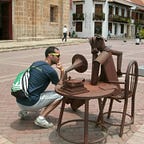The Atomic Bombs Saved Lives
Both American and Japanese
The atomic weapons dropped on the Japanese cities of Hiroshima and Nagasaki in August of 1945 remain — thankfully — the only use of these destructive weapons in history. The two bombings resulted in an estimated 105–110,000 deaths and close to another 100,000 injuries. They were devastating, and the world should hope that such weapons are never used again. However, despite their toll, it is almost certain that the use of atomic weapons saved lives, both American and Japanese.
The War in Summer 1945
The last major battle of World War II, the Battle of Okinawa, lasted nearly three months, from early April until late June 1945. Okinawa is not one of the Japanese home islands, but was nevertheless both proximate to Japan and heavily populated. Over the course of the months long battle, nearly 13,000 American soldiers were killed. But this death toll pales in comparison to what both the Japanese Army and the Okinawan populace suffered. Almost 110,000 Japanese soldiers died on Okinawa. It is impossible to know the exact numbers, but estimates are that somewhere between 100–150,000 Okinawan civilians were killed in the fighting, at least as many as were killed by both atomic weapons, perhaps tens of thousands more than the death toll of Hiroshima and Nagasaki combined.
The American victory at Okinawa was the penultimate victory of the United States’ “island hopping” campaign, by which the US military sought to capture territory…
